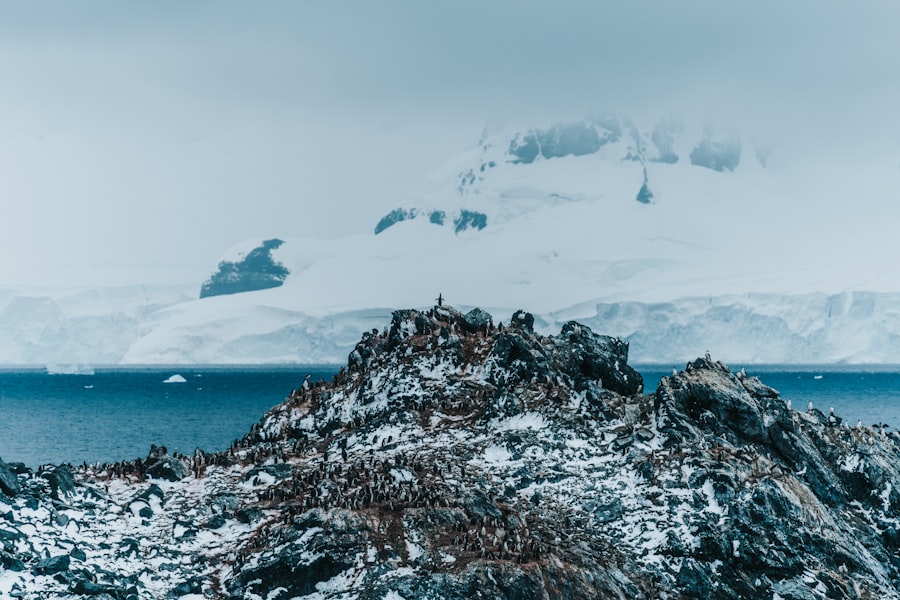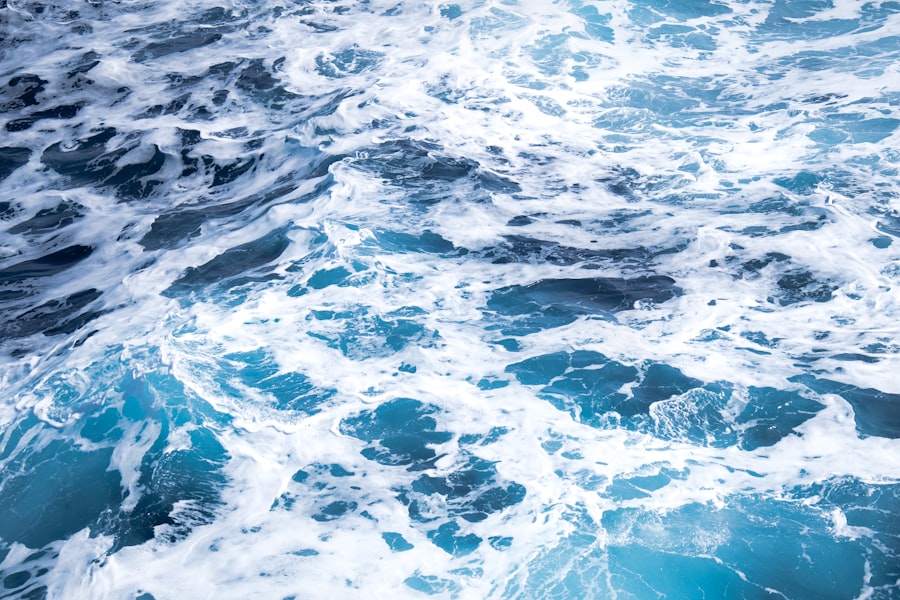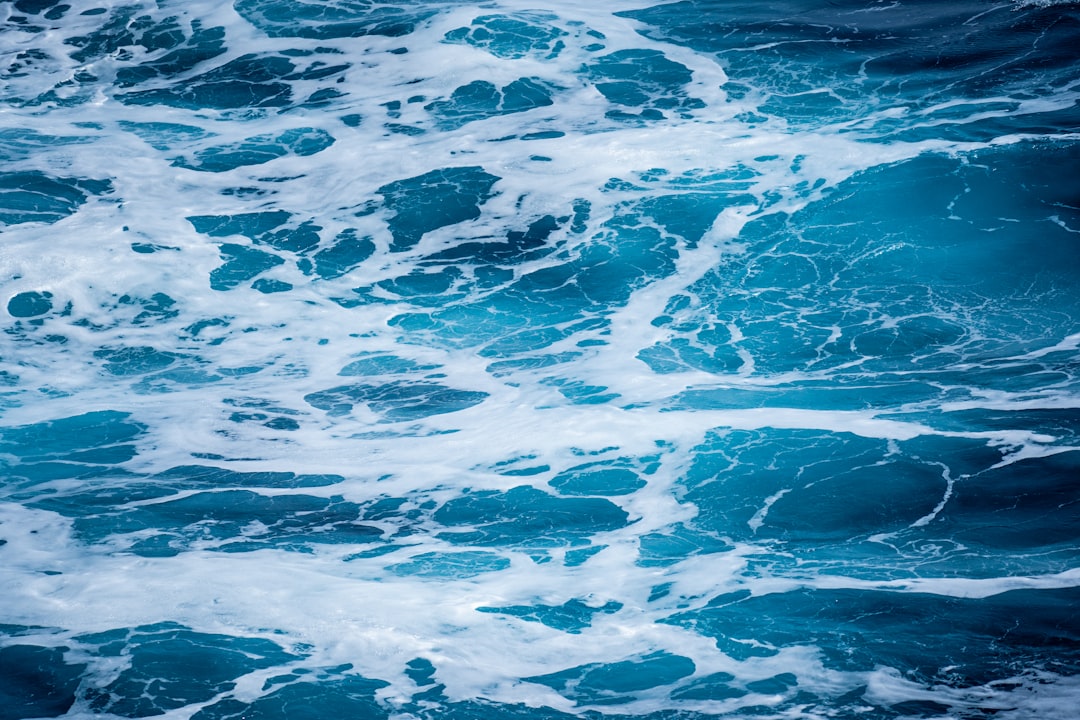The Drake Passage, a body of water that separates South America from Antarctica, is renowned for its dramatic landscapes and unpredictable weather. Named after the English explorer Sir Francis Drake, who navigated these waters in the late 16th century, the passage has become a focal point for adventurers, researchers, and wildlife enthusiasts alike. Stretching approximately 600 kilometers (370 miles) from Cape Horn to the South Shetland Islands, the Drake Passage is not only a geographical marvel but also a vital conduit for ocean currents and marine life.
This narrow stretch of ocean is often described as one of the most challenging maritime routes in the world. Its turbulent waters and fierce winds have earned it a reputation that both intimidates and fascinates those who dare to traverse it. The passage serves as a gateway to the pristine wilderness of Antarctica, drawing countless travelers eager to experience its raw beauty and the unique ecosystems that thrive within its depths.
As such, the Drake Passage stands as a testament to nature’s power and allure, beckoning explorers from all corners of the globe.
Key Takeaways
- The Drake Passage is a body of water between South America’s Cape Horn and the South Shetland Islands of Antarctica, known for its challenging sailing conditions.
- The treacherous waters of the Drake Passage are characterized by strong winds, large waves, and unpredictable weather, making it one of the most dangerous sea routes in the world.
- The Drake Passage is home to a diverse range of wildlife, including penguins, seals, and various species of seabirds, making it a popular destination for wildlife enthusiasts and nature lovers.
- The historical significance of the Drake Passage is marked by the expeditions of famous explorers such as Sir Francis Drake and the early navigators who braved its waters in search of new trade routes.
- The weather and climate in the Drake Passage are highly variable, with frequent storms and rough seas, making it essential for travelers to be prepared for challenging conditions.
The treacherous waters of the Drake Passage
The waters of the Drake Passage are infamous for their treachery, characterized by strong currents and unpredictable weather patterns. The confluence of the Atlantic and Pacific Oceans creates a unique environment where waves can reach staggering heights, often exceeding 10 meters (33 feet).
As a result, many vessels have encountered rough seas, leading to a reputation that has made the passage both feared and respected among mariners. Navigating the Drake Passage requires skill and experience, as sudden storms can arise without warning. The combination of powerful winds and turbulent waters can create conditions that challenge even the most seasoned sailors.
Despite these dangers, many adventurers view crossing the Drake as a rite of passage, a test of endurance that adds to the allure of their journey to Antarctica. The thrill of facing nature’s raw power is often seen as an integral part of the experience, making every crossing a story worth telling.
Wildlife of the Drake Passage

The Drake Passage is not only known for its challenging conditions but also for its rich biodiversity. The nutrient-rich waters support a variety of marine life, making it a prime location for wildlife enthusiasts. Among the most notable inhabitants are various species of whales, including humpback, minke, and orca whales, which can often be spotted breaching the surface or feeding in the nutrient-dense waters.
These majestic creatures draw many visitors who hope to witness their grace and power firsthand. In addition to whales, the passage is home to an array of seabirds, including albatrosses and petrels, which glide effortlessly over the waves. These birds are not only a sight to behold but also play a crucial role in the marine ecosystem.
Their presence indicates a healthy environment, as they rely on abundant fish populations for sustenance. The opportunity to observe such diverse wildlife in their natural habitat adds an enriching dimension to any journey through the Drake Passage, making it a haven for nature lovers and photographers alike.
Historical significance of the Drake Passage
| Aspect | Details |
|---|---|
| Discovery | The Drake Passage was discovered by Sir Francis Drake in 1578 during his circumnavigation of the globe. |
| Exploration | It has been a key route for exploration to the Antarctic region, with many expeditions passing through its waters. |
| Scientific Significance | The passage is important for oceanographic research due to its role in the circulation of the Southern Ocean and its impact on global climate. |
| Historical Events | The Drake Passage has been the site of numerous historical events, including shipwrecks and scientific discoveries. |
The historical significance of the Drake Passage cannot be overstated. It has long served as a critical route for explorers and traders seeking to navigate between the Atlantic and Pacific Oceans. Sir Francis Drake’s expedition in 1578 marked one of the first recorded crossings, paving the way for future explorers who would follow in his wake.
The passage became a vital link for maritime trade routes and played a significant role in shaping global exploration during the Age of Discovery. Throughout history, the Drake Passage has witnessed numerous expeditions that have contributed to our understanding of geography and oceanography. Explorers such as Ernest Shackleton and Robert Falcon Scott ventured through these waters in their quests to reach Antarctica, facing unimaginable challenges along the way.
Their stories of bravery and perseverance have become legendary, inspiring generations of adventurers to explore this remote region. The passage stands as a symbol of human curiosity and resilience in the face of nature’s formidable forces.
Weather and climate in the Drake Passage
The weather in the Drake Passage is notoriously unpredictable, characterized by rapid changes that can occur within minutes. The region experiences a maritime climate influenced by its proximity to Antarctica, resulting in cool temperatures year-round. Summer months (November to March) see milder conditions, with average temperatures ranging from 0°C to 10°C (32°F to 50°F).
However, even during this period, storms can arise unexpectedly, bringing heavy rain and strong winds. Winter months (June to August) are marked by harsher conditions, with temperatures often dropping below freezing. Icebergs and sea ice can pose additional challenges for vessels navigating these waters during this time.
Travelers must be prepared for a range of weather scenarios, from calm seas to violent storms. This unpredictability adds an element of excitement to any journey through the Drake Passage, reminding adventurers that they are at the mercy of nature’s whims.
Crossing the Drake Passage: Tips for travelers

For those planning to cross the Drake Passage, preparation is key to ensuring a safe and enjoyable journey. First and foremost, travelers should choose their time of year wisely; summer months generally offer more favorable conditions for crossing. However, even during this period, it is essential to remain flexible with travel plans due to potential weather disruptions.
Packing appropriately is also crucial. Layered clothing is recommended to accommodate fluctuating temperatures and varying weather conditions. Waterproof gear is essential for staying dry during unexpected rain or splashes from waves.
Additionally, travelers should consider motion sickness remedies, as many individuals experience discomfort during rough crossings. By taking these precautions, adventurers can enhance their experience while navigating this challenging yet rewarding passage.
Expeditions and cruises through the Drake Passage
Numerous expedition companies offer cruises through the Drake Passage, providing travelers with opportunities to explore both its waters and the breathtaking landscapes of Antarctica. These voyages typically include guided excursions led by experienced naturalists who share insights into the region’s unique ecosystems and wildlife. Passengers can expect to engage in activities such as whale watching, bird watching, and even landings on remote Antarctic shores.
Many cruises also emphasize sustainability and responsible tourism practices, ensuring that visitors leave minimal impact on this fragile environment. Travelers are encouraged to respect wildlife and adhere to guidelines designed to protect both marine life and their habitats. By participating in these expeditions, adventurers not only fulfill their dreams of exploring Antarctica but also contribute to conservation efforts aimed at preserving this pristine wilderness for future generations.
Research and scientific exploration in the Drake Passage
The Drake Passage serves as an important site for scientific research and exploration due to its unique oceanographic conditions and diverse ecosystems. Researchers study various aspects of marine life, including fish populations, plankton dynamics, and whale behavior. The passage’s nutrient-rich waters provide valuable insights into global ocean currents and climate change impacts on marine environments.
In addition to biological studies, scientists also monitor environmental changes within the passage itself. As climate change continues to affect polar regions, understanding how these changes impact marine ecosystems becomes increasingly vital. Research conducted in the Drake Passage contributes significantly to broader efforts aimed at understanding global climate patterns and their implications for biodiversity worldwide.
The allure of adventure in the Drake Passage
The allure of adventure in the Drake Passage lies not only in its breathtaking landscapes but also in its reputation as one of the last frontiers on Earth. For many travelers, crossing this formidable body of water represents a journey into the unknown—a chance to experience nature’s raw power firsthand while exploring one of the most remote regions on the planet. The thrill of facing unpredictable weather conditions and navigating treacherous waters adds an exhilarating dimension to any expedition through the passage.
Each crossing becomes an adventure filled with stories waiting to be told—of encounters with majestic whales breaching against stormy skies or glimpses of seabirds soaring gracefully above tumultuous waves. This sense of adventure draws countless explorers eager to embrace both challenge and beauty in equal measure.
Environmental concerns in the Drake Passage
As interest in exploring the Drake Passage grows, so too do concerns about its environmental health. Increased maritime traffic poses potential risks to marine ecosystems, including pollution from vessels and disturbances to wildlife habitats. The delicate balance that sustains life within these waters can be easily disrupted by human activity.
Conservation efforts are essential to mitigate these impacts while promoting responsible tourism practices among travelers. Organizations dedicated to protecting marine environments advocate for sustainable practices that minimize harm while allowing people to experience this remarkable region responsibly. By raising awareness about environmental concerns associated with increased tourism in the Drake Passage, stakeholders aim to ensure that future generations can continue to enjoy its wonders without compromising its ecological integrity.
The unforgettable experience of traveling through the Drake Passage
Traveling through the Drake Passage is an unforgettable experience that combines adventure with natural beauty and historical significance. From its treacherous waters teeming with wildlife to its role as a gateway to Antarctica’s pristine landscapes, this remarkable body of water captivates all who venture across it. The challenges posed by unpredictable weather only serve to heighten the sense of accomplishment felt upon successfully navigating its depths.
As travelers embark on their journeys through this iconic passageway, they become part of a long tradition of explorers who have sought out its wonders throughout history. With each crossing comes an opportunity not only for personal growth but also for contributing positively toward conservation efforts aimed at preserving this fragile environment for future generations. Ultimately, those who brave the Drake Passage find themselves enriched by an experience that transcends mere travel—one that connects them deeply with nature’s grandeur while fostering a sense of responsibility toward protecting it.
Der Drake Passage ist ein faszinierendes Thema für Abenteurer und Geografie-Enthusiasten. Wenn Sie mehr über die Herausforderungen und die Geschichte dieser berüchtigten Wasserstraße erfahren möchten, könnte ein verwandter Artikel auf der Webseite MyGeoQuest von Interesse sein. Diese Seite bietet eine Vielzahl von Informationen über geografische Entdeckungen und Abenteuer.
